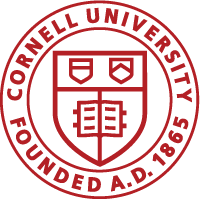Comparison of Two Injectable Anesthetic Protocols on Pulmonary Gas Exchange during One-Lung Ventilation in Dogs
Fellow: Rachel Mandelbaum
Mentor: Joaquin Araos
Co-Mentor: Manual Martin Flores
DESCRIPTION (provided by applicant):
Thoracoscopic surgeries are increasingly performed in small animals, offering a minimally invasive approach for diagnosing and treating thoracic diseases. The use of thoracoscopy in veterinary medicine has grown significantly over the past several years, a trend mirrored by an increased caseload in our teaching hospital. A key technique often employed during thoracoscopic procedures is one-lung ventilation (OLV), in which the lung on the operative side is purposefully collapsed to improve the visualization and working space within the chest cavity. Under normal physiological conditions, the pulmonary vasculature responds to alveolar collapse by initiating a robust mechanism known as hypoxic pulmonary vasoconstriction (HPV). This response redirects blood flow from nonventilated or collapsed alveoli to well-ventilated regions, optimizing ventilation-perfusion matching and maintaining adequate gas exchange. Under general anesthesia, inhalant agents impair the HPV response, resulting in “wasted” blood flow to non-ventilated lung that is not participating in gas exchange. This can lead to significant hypoxemia – abnormally low blood oxygenation – which poses a perioperative risk to vital organs. Injectable drugs such as propofol are often preferred as the main anesthetic agent because they are reported to better maintain the HPV response. However, propofol is rarely used as a single agent; instead, it is commonly combined with other anesthetics, sedatives, or analgesics to create a multimodal anesthetic protocol. The effects of such multimodal drug combinations on HPV and gas exchange in anesthetized dogs remain unknown. While opioids such as fentanyl are generally reported to have limited effect on HPV as a sole agent, dexmedetomidine has been shown to enhance it. Importantly, dexmedetomidine protocols optimize gas exchange in people undergoing OLV. This raises the question of how the choice of adjunct – fentanyl or dexmedetomidine – impacts the effects of propofol on HPV and gas exchange in dogs. An important clinical consideration is the current global and institutional effort to significantly reduce perioperative opioid use and replace it with alternatives that are less associated with the significant side effects of opioids. To address this, we aim to investigate two total intravenous anesthesia (TIVA) protocols in laboratory Beagle dogs undergoing OLV, hypothesizing that the combination of propofol and dexmedetomidine (PDX) will provide superior preservation of HPV and optimization of gas exchange compared to propofol combined with fentanyl (PFN). Specifically, we will evaluate the effects of these TIVA protocols on gas exchange by collecting arterial blood gases to calculate indices of pulmonary gas exchange. To assess the impact of each protocol on HPV, we will use electrical impedance tomography (EIT) to quantify the proportion of lung perfusion redirected away from the nonventilated lung. Finally, while HPV improves gas exchange, it can increase pulmonary vascular tone, leading to greater afterload on the right ventricle (RV). Therefore, we will also evaluate systemic and RV hemodynamics by calculating cardiac output and key indices of RV function. Our team has expertise in clinical and laboratory use of OLV and has pioneered the use of EIT for regional ventilation and perfusion studies in veterinary medicine. The results of this proposal will identify an optimal TIVA protocol that can be immediately applied in clinical practice, with the goal of enhancing perioperative outcomes in this rapidly growing surgical discipline.


